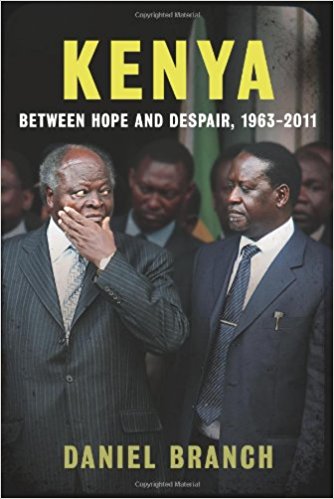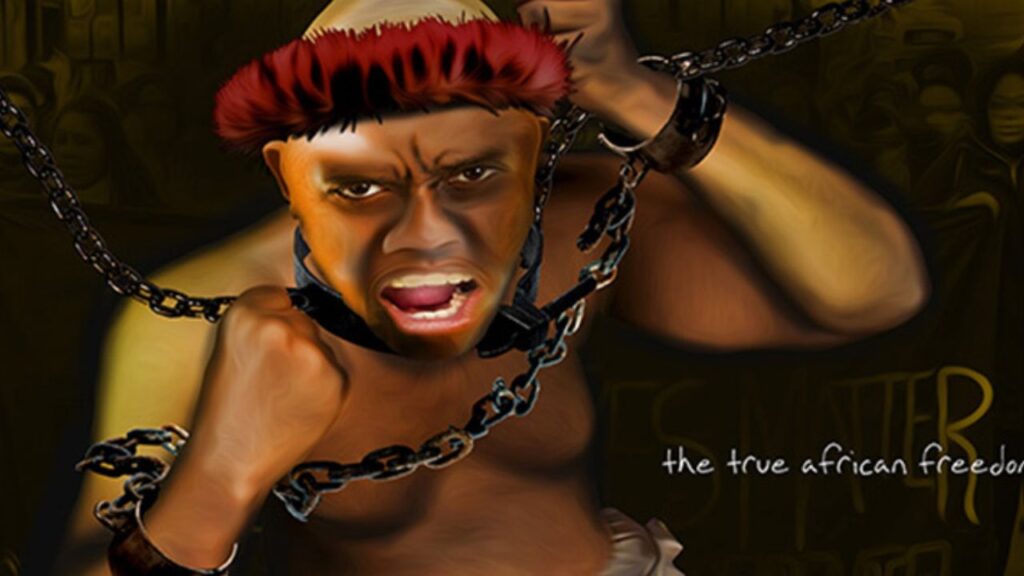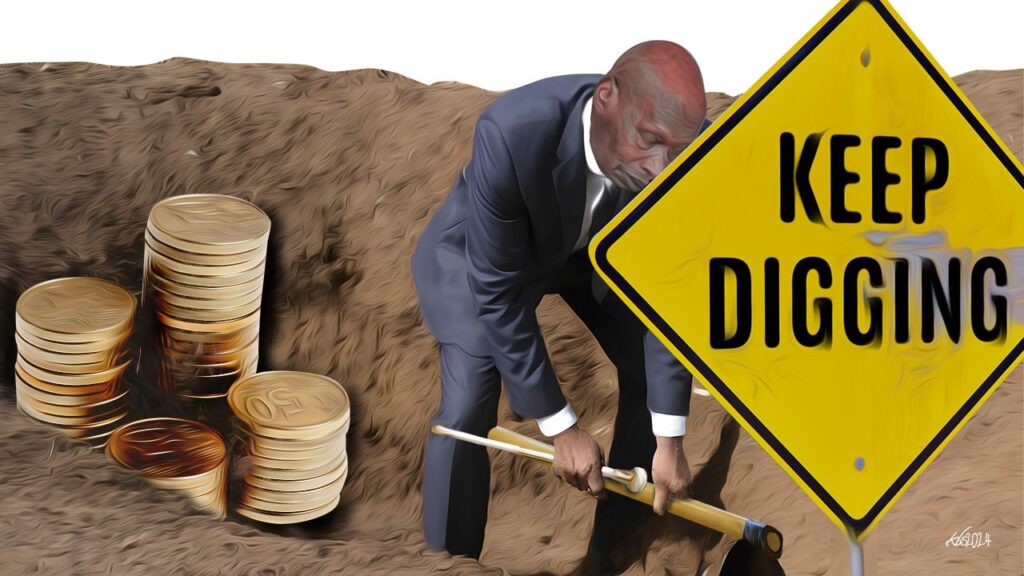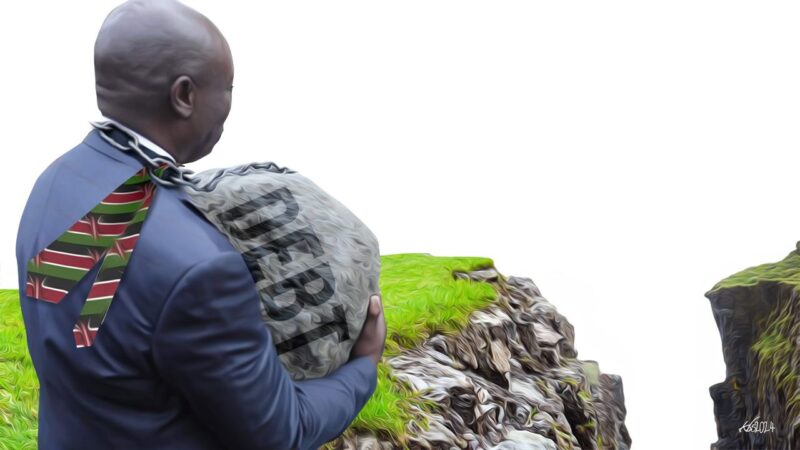A little less than ten years ago, I was in the basement of the Kenyatta International Conference Centre in Nairobi watching history unfold in front of me. As the Electoral Commission of Kenya’s chairman Samuel Kiviutu attempted to announce the winner of the 2007 presidential election, chaos unfolded. The assembled observers, party activists, journalists and diplomats were hurried out of the building on to the surrounding streets, which were deserted except for the police and General Service Unit officers. In the time it took to cross Uhuru Park, Kiviutu had been whisked up to State House and violence was breaking out across a stunned country.
It seems scarcely believable that a full decade has passed since the catastrophe of 2007. Whereas the euphoria of the 2002 election wiped the collective memory of the 1992 and 1997 elections, we still live in the shadow of the 2007 election. The violence after the 2007 election and the International Criminal Court drama that followed have had profound effects on the character of Kenyan politics. Both influenced the subsequent election in 2013, fixed a generation of political leaders, and created a way of talking and thinking about politics; we all now have in our minds a clear set of images of what could happen every time Kenyans go to the polling station.
The violence after the 2007 election and the International Criminal Court drama that followed have had profound effects on the character of Kenyan politics. Both influenced the subsequent election in 2013, fixed a generation of political leaders, and created a way of talking and thinking about politics; we all now have in our minds a clear set of images of what could happen every time Kenyans go to the polling station.
The scale of the event is only partially revealed by the bare numbers (1,133 dead, 600,000 forced from their homes, and an unknown number raped or maimed). The haunting testimonies published by Kimani Njogu revealed the human tragedies hidden beneath a national political crisis. The photographs in the Kenya Burning exhibition demonstrated how much of the violence took place in the full, open view of the watching world. The existential threat the violence posed to the very idea of Kenya was shown in the brilliant (Re)Membering Kenya series of books edited by George Gona and Mbũgua wa-Mũngai and the 2008 editions of Kwani? The tremendous energy the country’s writers and intellectuals have expended since 2008 to avoid a repeat of the post-election violence has, however, only been partially matched by its political leaders.
It would be churlish to pretend that nothing has happened since that may help prevent a recurrence of the violence of late 2007 and early 2008. However cynical peace narratives may be, these national-level debates reflect efforts at the grassroots to avoid elections becoming a matter of life or death. The constitution of 2010 has created real changes in the conduct of local governance. While the process of judicial reform remains a work-in-progress, the judiciary has greater capacity and willingness to intervene in politics in the public interest than at any other point in modern Kenyan history. But much else remains to be done.
Regardless of one’s views on the International Criminal Court debate, it would have been obscene for anyone to suggest in the early months of 2008 that a decade later there would have been hardly any prosecutions for the organisation and perpetration of the violence.
In 2012, Karuti Kanyinga and James Long carried out a health-check of Agenda Item 4 reforms of the power-sharing deal that were intended to address the underlying, long-term causes of the violence. Re-reading their study now, it is clear that progress towards the ambitious aims of the power-sharing deal have stalled.
Judicial reform has been a qualified success, but has not been met with progress within the ranks of the police. Recent events in Laikipia tell us all we need to know about the fate of any sustained attempt at land reform. The violence in Baringo and Boni Forest are illustrative of the continued lack of national cohesion.
Perhaps the underlying causes of the violence of 2007-8 could never have been tackled in such a short timeframe, but the country remains afflicted by inequality, insecurity and political institutions that lack the authority to protect vulnerable individuals and communities.
This culture of impunity could, however, have been tackled. Regardless of one’s views on the International Criminal Court debate, it would have been obscene for anyone to suggest in the early months of 2008 that a decade later there would have been hardly any prosecutions for the organisation and perpetration of the violence.
The current arguments about the Truth, Justice and Reconciliation Commission’s recommendations are just as depressing. In 2008, Kenyans learned the hard way what happens when grievances are unaddressed. There was unanimous agreement that investigation and restitution were urgently needed. The TJRC was a measured, balanced response to this nationwide consensus. To hear it now described as divisive by the Deputy President is distressing.
Again, this process stalled quickly. The admission by the police last year that they felt it unlikely that any further prosecutions would be forthcoming was remarkable. Three waves of electoral violence in 25 years have occurred without any meaningful intervention by the state, despite the extensive investigations and press coverage.
The current arguments about the Truth, Justice and Reconciliation Commission’s recommendations are just as depressing. In 2008, Kenyans learned the hard way what happens when grievances are unaddressed. There was unanimous agreement that investigation and restitution were urgently needed. The TJRC was a measured, balanced response to this nationwide consensus. To hear it now described as divisive by the Deputy President is distressing. But it is similarly wrong-headed for NASA to characterise the history of grievances in Kenya as being about winners and losers that roughly align to the electoral alliances in 2017. The TJRC’s overall argument was that all Kenyans have reason to fell aggrieved and should find common cause to create a society that recognises past injustices and makes every effort to avoid making new ones.
Just as the longer history of grievances is now being misrepresented for immediate political gain, so too is the more specific violence of 2007-8. The trigger for the violence – the disputed election result – is now being conflated with the causes of the violence. The police, for instance, depict their role in the post-election violence as purely defensive rather than as fundamental to the bloodshed. Let us not forget that more Kenyans were killed at the hands of the police in 2007-8 than by any other single group of actors. The vast majority of the 1,133 Kenyans who died were killed because the election triggered a deeper set of conflicts and the violence created its own logic of retributive attacks; the violence may have started as a protest over the election result, but spiralled into something else.
This deliberate conflation of protests and complaints about the electoral process with an incitement to violence serves a clear, current political purpose. Narratives about peace and “accept and move on” normally focus on the need of critics of the electoral process to accept an imperfect democracy and live with the consequences. But it was not the champions of democracy and human rights that fired the guns on protestors or torched the church at Kiambaa. Nor was it these critics who emasculated any effort at pursuing prosecutions of those responsible for the violence.
Historians (myself included), journalists and social scientists can and should do a much better job of exploring and celebrating the mechanisms and sites of cooperation: churches and mosques; schools; the workplace; bars, sports fields; even the bedroom. These are the places where Kenyans live their lives, not in polling stations or militia checkpoints.
As well as considering what caused the violence, we should also think about what held the country together a decade ago. The great majority of Kenyans refused to condone or participate in the violence. All the emphasis on the ethnic roots of instability in Kenyan history has left us without a proper understanding of the mechanisms by which more frequent, devastating bouts of violence have been avoided.
If one looks at the composition of MPs, county administrations and the histories of constituencies, it is all too easy to imagine that Kenya is a country of ethnic fiefdoms. But anyone who knows the country recognises that high politics can be misleading, and that simplistic ethnic geography hides a much more complex, cosmopolitan society that, in spite of its politicians, finds ways to get along.
Historians (myself included), journalists and social scientists can and should do a much better job of exploring and celebrating the mechanisms and sites of cooperation: churches and mosques; schools; the workplace; bars, sports fields; even the bedroom. These are the places where Kenyans live their lives, not in polling stations or militia checkpoints. And, in the absence of any great effort by the country’s leaders, these are places where peace will be made and kept in the coming weeks. This is a tremendous burden to be borne. Families and communities already have a precarious economic position without also having to assume the state’s responsibility to protect its citizens.
If one looks at the composition of MPs, county administrations and the histories of constituencies, it is all too easy to imagine that Kenya is a country of ethnic fiefdoms. But anyone who knows the country recognises that high politics can be misleading, and that simplistic ethnic geography hides a much more complex, cosmopolitan society that, in spite of its politicians, finds ways to get along.
A peaceful election in August will be heralded as a successful election. But the underlying causes of the 2007-8 violence will remain in place regardless of the outcome of the 2017 election. The country only survived the crisis of early 2008 because a promise to address these longer-term causes of violence was made by the country’s political leaders – and Kenyans believed them. Such promises will be met with an incredulous response next time.

Daniel Branch is a historian and author of Kenya: Between Hope and Despair, 1963-2011








